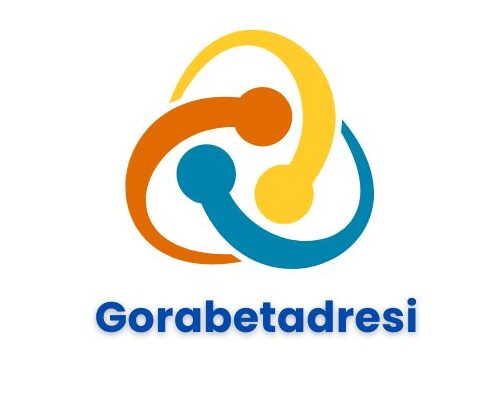Navigating the complexities of travel can be challenging, especially for members of the military and defense personnel who operate under tight schedules and strict protocols. This is where the Defense Travel System (DTS) comes into play. Designed to streamline and centralize all travel-related needs, DTS is a powerful tool that ensures efficiency and accuracy in official travel arrangements.
But what exactly is DTS, and how can you use it effectively? This blog dives deep into understanding the Defense Travel System, its key features, and best practices, helping you make the most of this essential travel management tool.
What Is the Defense Travel System (DTS)?
The Defense Travel System is a fully integrated, automated system used by the U.S. Department of Defense (DoD) to manage official travel for military and civilian personnel. DTS facilitates every step of the travel process, including:
- Travel Authorization: Creating and managing travel orders.
- Reservation Booking: Booking flights, accommodations, and rental cars.
- Expense Reporting: Submitting vouchers and getting reimbursed for travel expenses.
- Approvals: Streamlining workflow to ensure supervisory approvals are in place.
This system simplifies the intricate processes involved in federal travel while ensuring compliance with DoD regulations, allowing military and civilian personnel to focus on their missions.
Why Was DTS Developed?
Prior to DTS, official travel required managing multiple disparate systems and significant manual paperwork, which often led to inefficiencies, delays, and errors. The Defense Travel System was introduced to address these pain points by centralizing and modernizing travel operations. Its ultimate goal is to reduce administrative burdens, provide cost savings, and enhance the user experience.
According to recent reports, DTS processes millions of travel authorizations and vouchers annually, saving time and resources for the Department of Defense.
Key Features of Defense Travel System (DTS)
1. End-to-End Travel Management
From the moment you plan a trip to the time your reimbursement hits the bank, DTS covers the entire process. Here’s a breakdown of its primary services:
- Travel Authorizations: Submit and document your travel itinerary efficiently.
- Expense Vouchers: Keep track of all reimbursable and non-reimbursable costs directly through the platform.
- Real-Time Bookings: Book flights and hotels directly within DTS without needing third-party applications.
2. Compliance with Travel Policies
One of DTS’s standout features is its built-in compliance with DoD travel regulations, including the Joint Travel Regulations (JTR). This ensures that all travel arrangements and reimbursements adhere to government policies, reducing administrative errors and rework.
3. Cost Efficiency and Accountability
The system is optimized to help minimize travel costs while maintaining accountability through clear oversight. Auto-generated reports and audit trails ensure that all spending is transparent and justifiable.
4. User-Friendly Interface
While designed for a highly regulated environment, DTS’s interface is intuitive enough for both new and seasoned users to manage their travel arrangements. Training modules are also available to guide users on how to make the most of the system.
5. Centralized Reporting
For managers and supervisors, DTS offers tools to monitor spending and generate insights. This is especially useful for budgeting and financial planning within DoD operations.
Pros and Cons of Using DTS
Although the Defense Travel System has been a game changer for government travel, like any system, it comes with its strengths and challenges.
Pros
- Efficiency: Automates many labor-intensive travel processes.
- Policy Adherence: Ensures all travel aligns with military and DoD regulations.
- Accessibility: Provides an interface that allows users to book travel and submit reimbursements anytime, anywhere.
- Cost Control: Transparency helps organizations manage budgets effectively.
Cons
- Learning Curve: For first-time users, DTS can feel overwhelming without adequate training.
- System Glitches: Like all technology, DTS can experience downtime or errors, creating potential delays.
- Customization Limitations: The system’s rigidity in adhering to DoD regulations means fewer opportunities for customization.
Tips for Navigating DTS Successfully
To make the most out of DTS, it’s essential to follow a few best practices:
1. Take Advantage of Training Resources
The DoD offers extensive online training and support for DTS users. These resources range from step-by-step tutorials to webinars that explain advanced features. Familiarizing yourself with these tools before you start can save significant time.
2. Carefully Review Travel Authorizations
Before submitting your travel authorization, make sure all details, from travel dates to lodging preferences, are accurate. Errors in the initial stages can cause complications later.
3. Save Receipts and Document Expenses
While DTS automatically tracks many costs, you’ll need to manually upload receipts for certain expenses. Keeping everything organized will make submitting expense vouchers easier.
4. Double-Check Compliance
Review your itineraries and expenses to ensure they align with DoD Joint Travel Regulations. Avoiding policy violations speeds up the reimbursement process.
5. Reach Out for Support
When in doubt, don’t hesitate to contact your local DTS office for guidance. They can often resolve minor issues and clarify any confusing policies.
How DTS Is Transforming Defense Operations
The Defense Travel System plays a pivotal role in enhancing operational efficiency for the Department of Defense. By automating travel logistics, DTS allows personnel to focus on their critical missions rather than administrative burdens. For example:
- Time Savings: DTS’s streamlined workflow saves countless hours of manual work.
- Cost Reductions: Smart booking options and compliance tools help minimize unnecessary expenditure.
- Improved Mission Readiness: Simplified travel arrangements ensure personnel are where they need to be, when they need to be there.
Final Thoughts on Using DTS Effectively
For military and defense personnel, understanding and efficiently using the Defense Travel System is vital. While it might feel complex at first, the benefits it offers—ranging from streamlined travel arrangements to simplified reimbursements—are invaluable.
By taking time to get familiar with DTS and adopting best practices, personnel can maximize their travel experience while contributing to the broader goals of efficiency and cost-effectiveness within the Department of Defense.
If you’ve got questions or would like to learn more about incorporating DTS into your organization’s travel planning, visit the official DTS website today.
FAQs about the Defense Travel System (DTS)
What is DTS?
The Defense Travel System (DTS) is an online travel management system used by the Department of Defense to streamline travel authorizations, reservations, and reimbursements for military and defense personnel.
Who can use DTS?
DTS is available to military members, government civilians, and contractors who are authorized to travel under the Department of Defense.
How do I access DTS?
You can access DTS through the official DTS website with a Common Access Card (CAC) and proper credentials.
What types of travel can be arranged in DTS?
DTS supports official government travel, including temporary duty (TDY) travel, permanent change of station (PCS) travel for some users, and group travel arrangements.
How can I get help with using DTS?
If you need assistance, you can contact your local Defense Travel Administrator (DTA) or consult the training resources available on the DTS website.
Is DTS available 24/7?
Yes, DTS is an online system that can be accessed at any time. However, technical or administrative support is dependent on local office hours.











